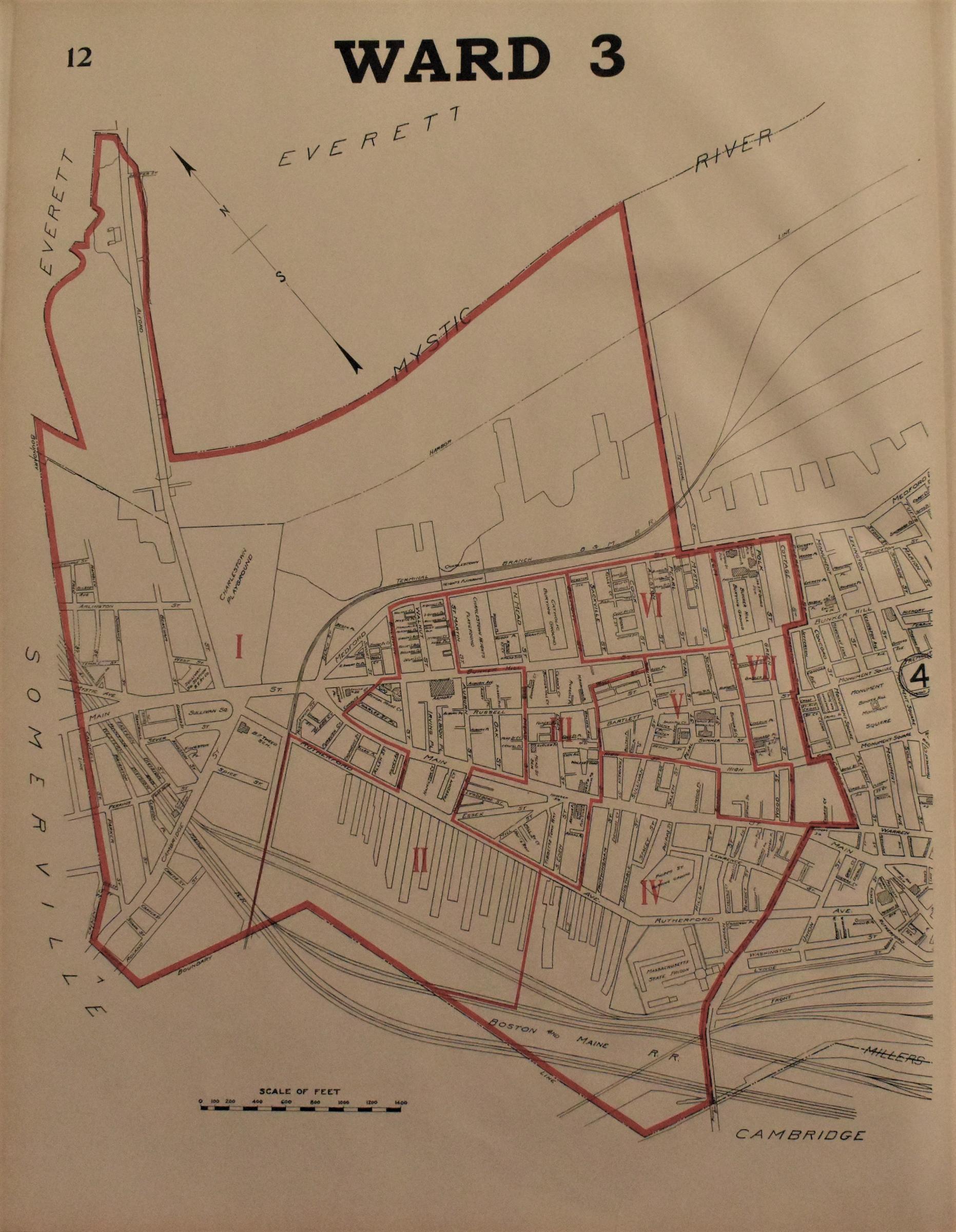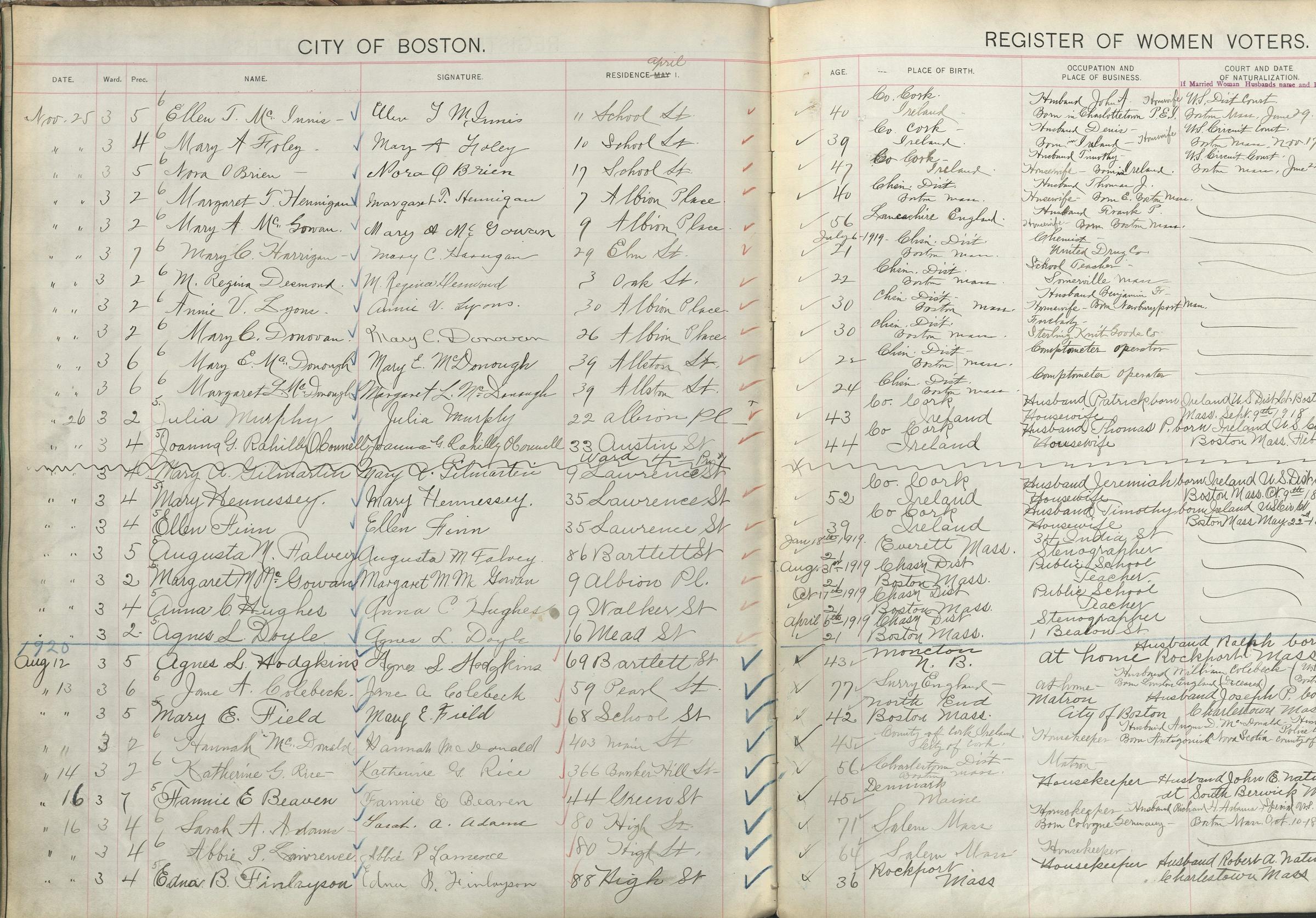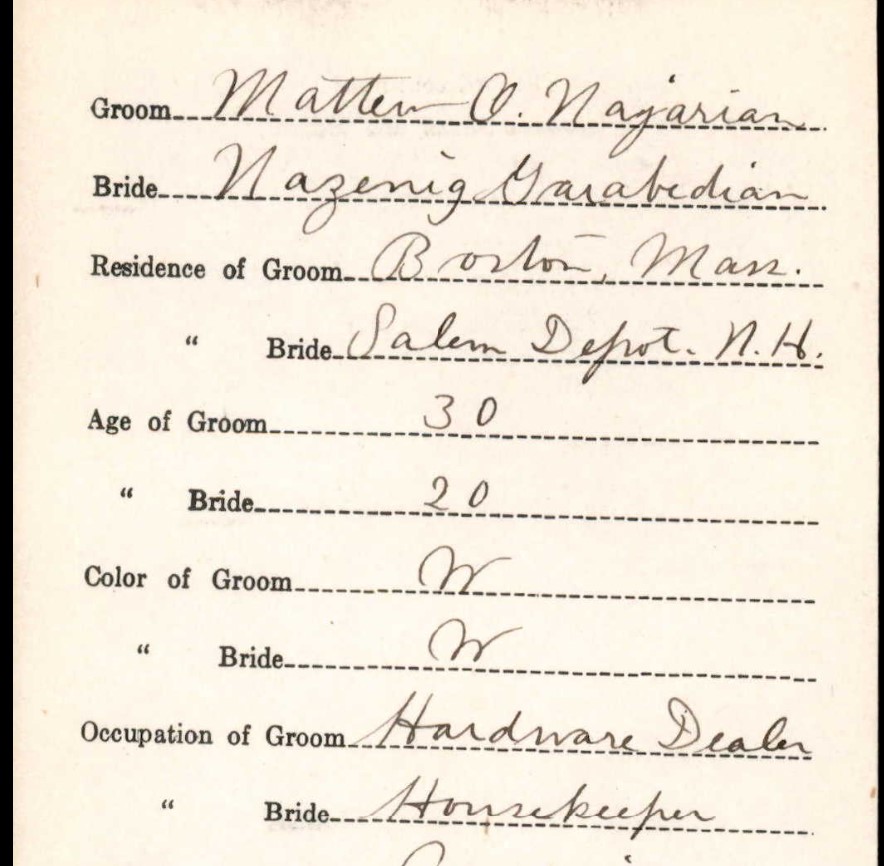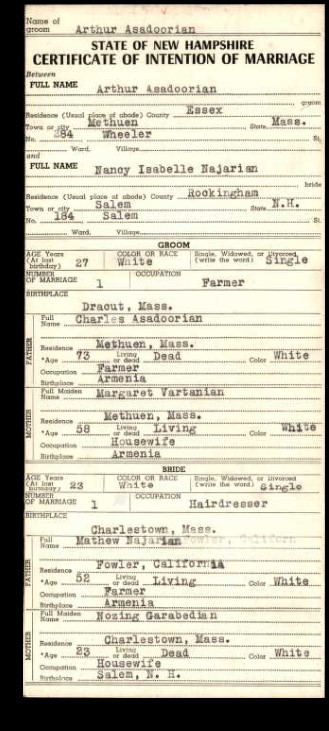The Mary Eliza Project: Ward 3 Voter Records Now Available
We've finished transcribing our Ward 3 Women's Voter Registers from 1920 and have added them into an easily accessible, searchable, and sortable dataset.
In August of 1920, the month that Tennessee ratified the 19th Amendment, the women of Boston began registering to vote. Women registered by the thousands, and on October 13, 1920, the last day to register before the 1920 presidential election, over 50,000 Boston women had registered to vote.
The 1920 Women's Voter Registers now live at the Boston City Archives and document women's names, addresses, places of birth and occupations. Sometimes women provided additional information about their naturalization process to become a US citizen, including where their husbands were born because in 1920, a woman's citizenship status was tied to her husband's nationality.
The Mary Eliza Project, named after African American nurse, civil rights activist, and Boston voter Mary Eliza Mahoney, is transcribing these valuable handwritten records into an easily searchable and sortable dataset. We have just finished transcribing the registers for Boston's Ward 3!
In 1920, Ward 3 covered the western part of Boston's Charlestown neighborhood. You can see the ward boundaries in the below map.
Over 1600 women living in Ward 3 registered to vote in 1920. Most of Ward 3's new voters were born in Massachusetts, but the neighborhood was also home to over 150 women voters born in Ireland as well as women who recorded their birthplaces as Canada, Norway, Russia, and the French West Indies.
Women in Ward 3 worked as sugar packers, telephone operators, forewomen, box makers, florists, teachers, stenographers, clerks, housekeepers, tailors, accountants, and "at home." One of the most interesting job titles we found was "Comptometer operator." A comptometer is an early type of mechanical calculator.
Behind every entry, there is a story! Nazenig Najarian registered to vote on October 6, 1920. She listed her birthplace as Salem, New Hampshire. She also listed her husband as Matthew Najarian, born in Armenia, and naturalized in 1917 in the Manchester, New Hampshire Superior Court. Some additional research fills out Nazanig's story.
Matthew Najarian's certificate of naturalization states that he entered the United States in 1911.
Interestingly, Matthew's naturalization paperwork lists his country of origin as "Turkey." However, in every every other record we found, both Matthew and Nazenig list Matthew's birthplace as "Armenia." This sheds some light on Matthew and Nazenig's ties to their ethnic community and they way they thought about their heritage.
Matthew and Nazanig appear to have been married shortly after Matthew's naturalization in 1917
Though Matthew and Nazenig relocated from New Hampshire to Charlestown, Nazanig appears to have had strong family ties in Salem, New Hampshire. When Melkon Garabedian of New Hampshire, died in 1923, his will lists a Nazenig as one of the primary beneficiaries of his large estate. The will also documented a large extended Garabedian family living in the New Hampshire area. Oddly, the will states that Nazenig will inherit when she reaches adulthood - but Nazenig would have certainly been considered an adult in 1923!
A 1921 gravestone in Lawrence, Massachusetts helps us solve the mystery.
This gravestone lists Nazenig's death on June 4, 1921, only months after she registered to vote in Charlestown. The inscription, "My Beloved Daughter," points to a close relationship with her father Melkon Garabedian. While we can't know her exact cause of death, its likely that she died during or shortly after giving birth to her daughter, also named Nazenig, and listed in Melkon's will. Records show that Matthew and Nazenig had at least three daughters, Sarah, Nancy Isabelle and Nazenig. While we can't locate an exact date of birth for Nazenig, the timeline that we have for Matthew and Nazenig's marriage and other daughters point to her having been born in 1921. And it is easy for us to imagine a heartbroken Matthew naming his newborn daughter after his wife who died giving birth to her.
The final record we found in our search for Nazenig is a 1940 certificate of marriage intention for her middle daughter Nancy Najarian. The certificate lists Nancy's birthplace as Charlestown, Massachusetts and her parents as Nazenig Garabedian Najarian and Matthew Najarian. At the time of Nancy's marriage intention, her father Matthew is listed as living in Fowler, California and his occupation is "farmer." Her mother Nazenig is listed as deceased at age 23, confirming that the 1921 gravestone in Lawrence is, indeed, Nazenig's. Interestingly, Nancy also lists her father's place of birth as Armenia. Her groom, Arthur Asadoorian, also lists both his parents as being born in Armenia.
Nazenig Najarian's story is just one of many stories waiting to be uncovered in Boston's Women Voter Registers. Dive into the dataset and let us know what you find!
Special thanks to Kate Bradley, Archivist/Librarian at the French Institute at Assumption University for her invaluable and expert help in researching Nazanig Najarian's story.








